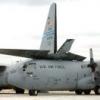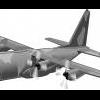Shack. The enlisted pilot concept is one of those dumb ideas that simply won't go away. Yes, we had enlisted pilots in the 20s and 30s, and also during WW II. The Army could get away with it, because (1) something called the Great Depression provided a powerful incentive for folks to stay on active duty, even if they were working for enlisted wages, and (2) those enlisted pilots were competing for active duty officer billets. Some of the best pilots during the interwar period were enlisted aviators. The other two primary members of Chennault's "Three Men on a Flying Trapeze" demo team were enlisted aviators . . . but guess what? They were reserve officers who, when their one or two-year active-duty stints were up, accepted the demotion to enlisted status to stay on active duty. On the days they flew in demo's, they wore their reserve officer rank. They got commissioned later on active duty, in conjunction with the wartime buildup. Don't forget that it was the Army Air Corps and Army Air Forces that had enlisted pilots. Of course the Army wanted its aviators to be enlisted, because if they became officers, they might end up running the Army. The Army couldn't wait for the Air Force to become an independent service after the war, lest airmen take over the whole organization. Imagine how much worse it would have been for the ground service, if all the enlisted pilots/navs/bombardiers were made officers. They might have more-senior and smarter (airmen typically scored 10 IQ points higher than their ground counterparts during the war) air officers commanding non flyers. Think of active duty enlisted pilots in the military as something akin to regional pilots in the commercial world. It's a neat idea, and it can work, so long as folks see it as a stepping stone to greater things. Folks have embraced the suck in the regional world, because they perceived a long-term future benefit (transition to major airlines). Short term pain, long-term gain. The problem for the Air Force is that the primary avenue for long-term gain for enlisted aviators would be the commercial RPA industry (or if we ever trained enlisted pilots of manned aircraft, the airline industry). At least if you train officers to fly RPAs, there's a more reasonable monetary incentive to stay in. Looking at ACP take rates, though, the monetary incentive is far from adequate. Creating enlisted pilots would strike me as ridiculously penny-wise and pound-foolish. We'd spend a whole bunch of time and money to train them, then they would simply get out at the end of their initial enlistments and take their skills to the commercial world. They'd be fools not to. Creating an Air Force warrant officer corps is equally problematic. The Army system works great, because that service primarily flies helos. Retaining helo pilots on active duty is much easier because, oddly enough, there are proportionally fewer lucrative opportunities in the civil sector. If there are any Army warrants who have gone directly into fixed wing, I'd love to hear what their retention stats are right now. They can stay in the Army, knowing that they'll run into a ceiling promotion-wise, or take their skills to the civil sector and makes way more cash than they ever could in the Army--while (even more importantly) not having to be in the Army. It would seem to be a helluva lot smarter to ramp up Air Force OTS production. Provide liberal bootstrap opportunities for medically-qualified enlisted folks and advertise extensively in colleges/universities for folks to earn their commissions and become RPA pilots. You avoid creating a whole warrant officer corps for a relatively niche career field, and you can get your officers relatively quickly and cheaply (especially since many quality enlisted folks already have their undergrad degrees, or at least are working on them). Of course, the Air Force doesn't like to read its own history. We'll probably try the enlisted pilot thing, realize it was a dumb idea from the outset and we should have known better . . . and scrap it, having further delayed getting the RPA pilot community healthy manning-wise. TT








